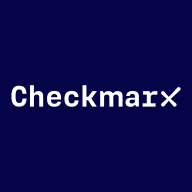

Checkmarx One and Check Point CloudGuard Code Security are both competitive security tools catered towards enhancing software security. While Check Point CloudGuard is preferred for its expansive coverage and integration features, Checkmarx One stands out with superior code vulnerability scanning.
Features: Checkmarx One specializes in scanning uncompiled code and offers features like vulnerability flow tracking and custom code check rules, supporting multiple programming languages. Check Point CloudGuard provides automation, rapid risk identification, and scalability within its ecosystem, along with centralized compliance and security management through intuitive dashboards.
Room for Improvement: Checkmarx One is critiqued for high false positive rates and a complex licensing model, with limited dynamic testing capabilities. Check Point CloudGuard's issues include scarce documentation and a non-transparent pricing structure, alongside concerns about support responsiveness.
Ease of Deployment and Customer Service: Checkmarx One offers flexible deployment across Private, Hybrid, and Public Clouds, gaining praise for its knowledgeable support team. Check Point CloudGuard provides straightforward integration in Public and Hybrid Cloud scenarios, though its support services have room for refinement.
Pricing and ROI: Checkmarx One, though high-cost, is valued for its comprehensive security features, with some criticism on its rigid licensing. Check Point CloudGuard is appreciated for affordability and a simpler renewal process, yet could improve in pricing transparency. Both deliver solid ROI with Checkmarx emphasizing security practices and Check Point CloudGuard leveraging cloud efficiencies.


Check Point CloudGuard Code Security enhances application and site security in Microsoft Azure, detecting vulnerabilities, preventing breaches, and safeguarding against malicious activities while ensuring compliance and improving code quality.
Check Point CloudGuard Code Security, designed for cloud and on-premise environments, scans applications configurations, detects exposed credentials, and aligns with legal frameworks. It offers simple implementation, centralized management, customizable rules, and improved security practices. It supports multiple clouds, offers real-time data loss prevention, advanced posture management, and remediation guidance. It enhances policy enforcement and provides powerful analytics, intuitive dashboards, and automation for reduced human error and better security.
What are the key features of Check Point CloudGuard Code Security?Check Point CloudGuard Code Security is vital in industries where securing cloud and on-premise environments is critical. For instance, in finance, it aids in regulatory compliance and protects sensitive data. Healthcare relies on it for safeguarding patient information, while tech companies use it to protect intellectual property during development. In retail, it enhances security against cyber threats, securing transaction data and customer information.
Checkmarx One is an enterprise cloud-native application security platform focused on providing cross-tool, correlated results to help AppSec and developer teams prioritize where to focus time and resources.
Checkmarx One offers comprehensive application scanning across the SDLC:
Checkmarx One provides everything you need to secure application development from the first line of code through deployment and runtime in the cloud. With an ever-evolving set of AppSec engines, correlation and prioritization features, and AI capabilities, Checkmarx One helps consolidate expanding lists of AppSec tools and make better sense of results. Its capabilities are designed to provide an improved developer experience to build trust with development teams and ensure the success of your AppSec program investment.
We monitor all DevSecOps reviews to prevent fraudulent reviews and keep review quality high. We do not post reviews by company employees or direct competitors. We validate each review for authenticity via cross-reference with LinkedIn, and personal follow-up with the reviewer when necessary.